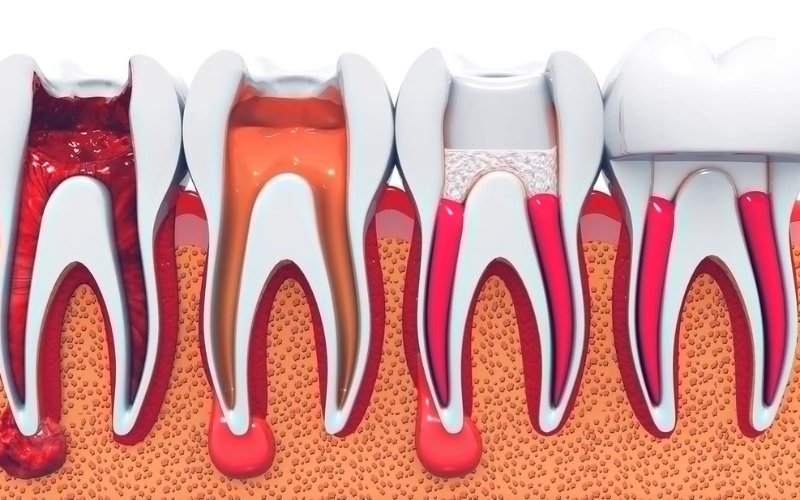No one wants to hear the words, “You need a root canal.”
The procedure has a reputation for being painful, but the truth is, modern dentistry makes it much more comfortable than before. Still, many people prefer to explore other options before committing to it.
The good news?
Alternative treatments exist, and in some cases, they can help you avoid a root canal altogether.
Understanding your options can help you make an informed decision about your dental health. Some treatments can stop decay before it reaches the tooth’s nerve, while others can manage infections without removing the pulp. Knowing when a root canal is necessary and when an alternative works can save your tooth and protect your smile.
Let’s explore the best ways to avoid root canals and keep your teeth healthy.
Why Do Dentists Recommend Root Canals?
A root canal isn’t just about relieving pain—it’s about saving your natural tooth. When decay or infection reaches the pulp, the inner layer of the tooth, it causes severe pain and swelling. Without treatment, the infection can spread, leading to tooth loss or more serious health issues.
Common reasons for root canal treatment include:
- Deep cavities that reach the pulp and cause infection.
- Cracked or fractured teeth that expose the nerve.
- Severe trauma that damages the inner layers of the tooth.
- Repeated dental procedures that weaken the tooth over time.
- Abscesses that form at the root due to untreated infections.
By removing the infected pulp and sealing the tooth, a root canal preserves your natural smile.
Top Alternatives to Root Canals
If you want to avoid a root canal treatment, alternative ones may help. The right option depends on the severity of the decay, infection, or damage. Some treatments work well for minor issues, while others provide a last resort when saving the tooth isn’t possible.
Here are some top alternatives:
- Dental fillings – Treat minor to moderate cavities before they reach the pulp.
- Pulp capping – A protective treatment that helps preserve the pulp when decay is close but hasn’t reached it yet.
- Ozone therapy – Uses ozone gas to kill bacteria and promote healing without invasive procedures.
- Tooth extraction and replacement – When saving the tooth isn’t an option, removal followed by a dental implant or bridge restores function.
Discussing these options with a dentist ensures you choose the best solution for your dental health.
How to Prevent Root Canal Treatment
The best way to avoid a root canal is to prevent tooth decay and infections in the first place. Simple daily habits and good oral hygiene can keep your teeth strong and cavity-free.
Here’s how to reduce your risk:
- Brush twice a day using fluoride toothpaste to protect enamel.
- Floss daily to remove plaque and food particles between teeth.
- Visit the dentist regularly for professional cleanings and early detection of issues.
- Limit sugary and acidic foods that weaken enamel and promote decay.
- Wear a mouthguard if you grind your teeth or play contact sports.
Taking these preventive steps can help you maintain a healthy smile and reduce your chances of needing major dental work.
When to See a Dentist for Tooth Pain?
Mild discomfort might not seem like a big deal, but ignoring persistent pain can lead to bigger problems. If you’re experiencing tooth pain, early intervention can prevent serious infections and even save your tooth from needing a root canal.
Look out for these warning signs:
- Sharp pain when chewing or biting down.
- Prolonged sensitivity to hot, cold, or sweet foods.
- Swelling or tenderness in the gums near a tooth.
- Dark discoloration or visible decay on a tooth.
- A pimple-like bump on the gums, which may indicate an abscess.
Don’t wait for the pain to worsen. A quick visit to the dentist can help you find relief and avoid more invasive treatments.
Avoiding a root canal is possible with the right approach. Whether it’s early intervention, alternative treatments, or preventive care, you have options to protect your smile. Don’t ignore tooth pain—addressing issues early can save your natural teeth. Talk to a dentist about the best solution for your dental health and keep your smile strong for years to come.

